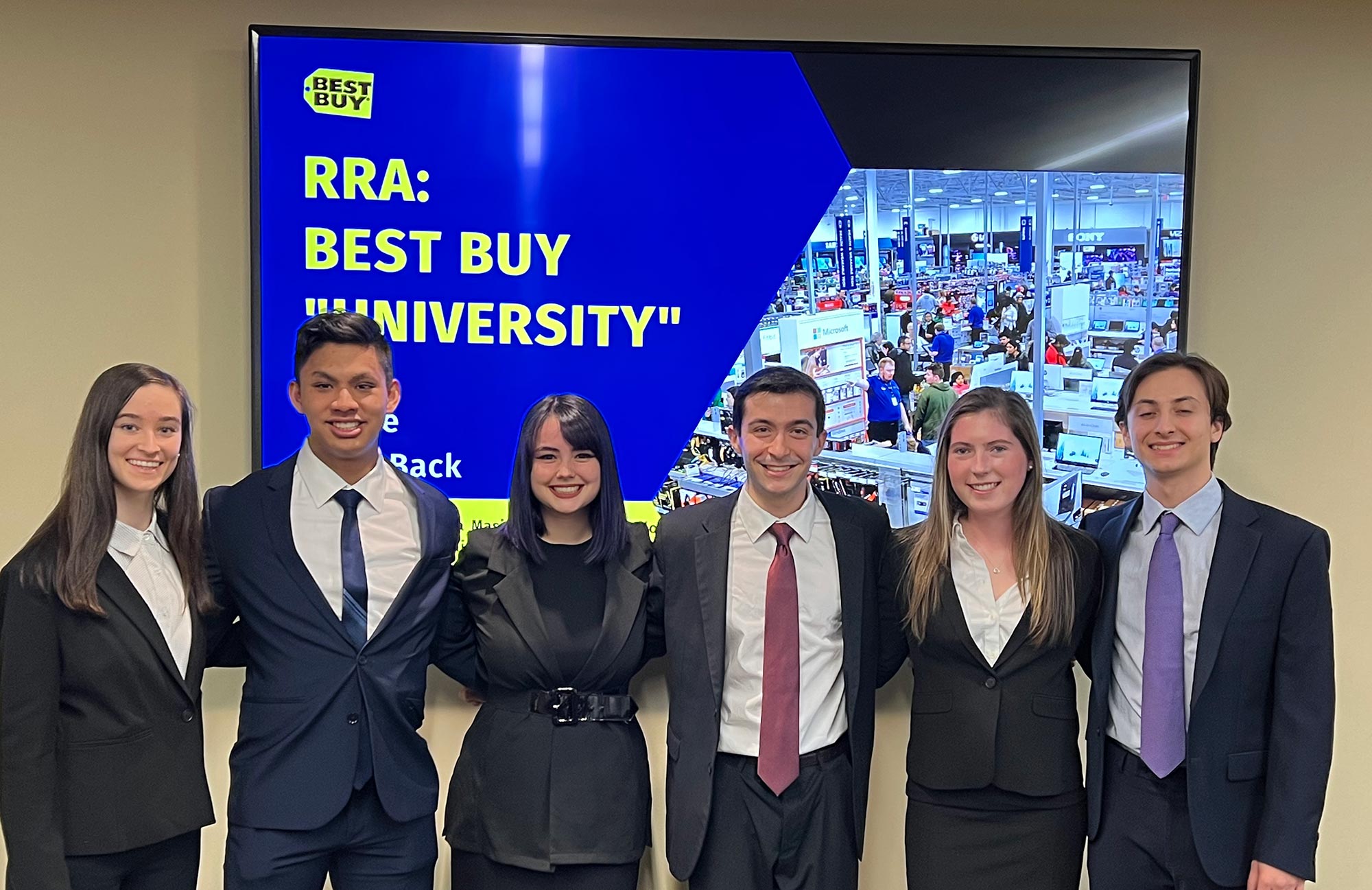News
The Best Buy for a New Generation



The Consulting Cup is an annual competition in which teams of sophomores identify a challenge faced by a major company and come up with a creative fix.
While Best Buy has traction with many generations of consumers, the students’ research revealed a gap among their own Generation Z. A large Best Buy store sits just one-tenth of a mile from the Rose Hill campus, but no one they knew at Fordham had ever been inside.
Fortunately, Michael Parrinello, Jacqueline Risch, Claire Brunner, Luka Masic, Matthew Quijano, and Julia Quinn had an idea. Best Buy could attract Gen Z buyers by infusing social impact into its brand identity. The company already had the seed of a platform to do it, too: a network of Teen Tech Centers where students from under-resourced communities can not only access technology, but also learn career-advancing skills in using it.
It struck the students that the Teen Tech Center network was surprisingly small: only 41 existed nationwide, versus 990 traditional retail stores. Teen Tech Centers could have a positive impact on society, but they needed to be scaled up and integrated far more closely with the day-to-day shopping experiences of Best Buy consumers.
For their project, the group proposed a significant expansion of Teen Tech Centers in Best Buy retail locations on or near college campuses. Generation Z consumers would see firsthand the positive social programming run by the company, and some would have the chance to get involved via service-based internships on a “Social Squad.”
The team’s proposal captured the attention of Best Buy’s social impact staff. Group members had reached out with a summary of their proposal and an invitation to connect, and the company was intrigued. The team members and Best Buy executives have discussions underway, a development that is especially rewarding for the students.
“Our generation is a lot more mindful about where they decide to put their money,” Risch said. “From a personal standpoint, I am willing to go the extra mile for a company that is trying to put underprivileged community first or help women first, or that has a reputation for social impact.”
Parrinello felt a strong connection between this project and his Jesuit business education. “Fordham really stresses the connection between the society that enables the business to exist and the operation of that business,” he said.
The team members expressed thanks to their faculty mentors, Anthony DeFrancesco and Clarence E. Ball III, and they are excited to learn where their conversations with Best Buy lead.